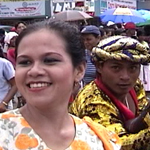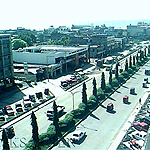�

�
About OutsourceIT2philippines
- Outsourceit2philippines.com is a subsidiary company of Hubport Interactive Inc.
- The OIT2P team evaluates clients' businesses and identifies what kind of Internet presence they need.
- The OIT2P Management Team has significant professional management experience
- Our seven servers are located in two state-of-the-art data centers in Houston, Texas

�



Gen san
Geography
General Santos is the southernmost city in the country. It is less than 2,000 kms. away from Singapore and is the nearest point in the Philippines to Australia.
The city is bounded by the municipalities of Polomolok and T'boli in South Cotabato Province, and by Alabel, Malungon and Maasim in Sarangani.
It has a total land area of 53,606 hectares (536.06 sq. km.), which is less than two per cent of Region XI's entire area.
About 23,000 hectares can be used for intensive and specialized agriculture while 11,564 hectares of sloping land are for reforestation and grazing.
Minerals found in the area include limestone, sulfur, copper, nitrate, luminate, rutile and guano. Silway, Siguel and Buayan, three of the city�s six rivers, are rich sources of sand and gravel for construction.
Population

(2000): 411,822
Annual growth rate (1999-2000): 5.1%
Household population: 410,844
No. of households: 86,595
Average household size: 4.74
General Santos City has one of the highest population growth rates in the Philippines at 5.1%, compared with Southern Mindanao's 2.62% and the country�s 2.34%. The high growth rate is said to be due to the influx of migrants from other parts of the country, seeking better economic opportunities.
Language / People
Cebuano is widely spoken in the Sosksargen area. Many also speak English which is the language used in school and business.
Cebuano is the most common dialect because many of the locals are immigrants from Cebu and Bohol. English is also widely spoken.
Economic Status

General Santos City has an agro-industrial economy. It is home to big agri-based companies such as Dole Philippines and General Milling Corp. It accounts for the second largest total daily fish landings in the Philippines at 300 metric tons. Five tuna canneries operate in the city.
General Santos is part of the Sosksargen growth area. In 1994, the Socsargen Area Development Project was launched, grouping together the provinces of South Cotabato and Sarangani, and General Santos City. The project was later renamed Socsksargen after it was expanded to include Sultan Kudarat.
Facilities. The 3,200-m. runway of General Santos airport can handle Airbus 300, Boeing 747s and other wide-bodied jets.

The 561-m. Makar Wharf has the most number of shipcalls in Sosksargen. It has container handling facilities, and livestock holding and handling terminal with refrigeration capabilities.
The General Santos City Fish Port can accommodate fishing vessels, reefer carriers, and refrigeration facilities.
Major products / Industries
Tuna, pineapple, rice, corn, coconuts, asparagus, copra, livestock, prawn, cut flowers.
Agriculture, agro-processing, fishing and fish processing.
Brief History
The city was named after the man who led the first batch of Christian migrants who settled in the area. For several centuries, Cotabato was an enclave of the Muslims. At the turn of the 15th century, Sharif Muhammad Kabungsuan of Arabia arrived in the province to introduce Islam. He founded the first sultanate in Mindanao. Cotabato was the seat of the Maguindanao sultanate.
General Santos was then called "Dadiangas" after a thorny shrub that abounds in the area. Even today, some still refer to the city as Dadiangas or Dajangas.
At one time, the village was renamed Buayan, perhaps referring to the crocodile-infested river nearby. Buayan was also the name of the early Muslim ruler of Koronadal Valley.
On February 27, 1939, General Paulino Santos led the first and largest batch of settlers organized by the Commonwealth government opened the Koronadal and Allah valleys to the landless. The 69 settlers were mostly from Luzon.
In 1947, President Manuel A. Roxas made General Santos into a regular municipality, which became the seat of the provincial government.
General Santos was conferred chartered city status on July 8, 1968. It belongs to the First Congressional District of South Cotabato. It has 26 barangays.
Information Source as of March 2005: BusinessWorld Online, Inc. Picture Source as of March 2005: jnieberg.net/fred, Lakbay Pilipinas Online





